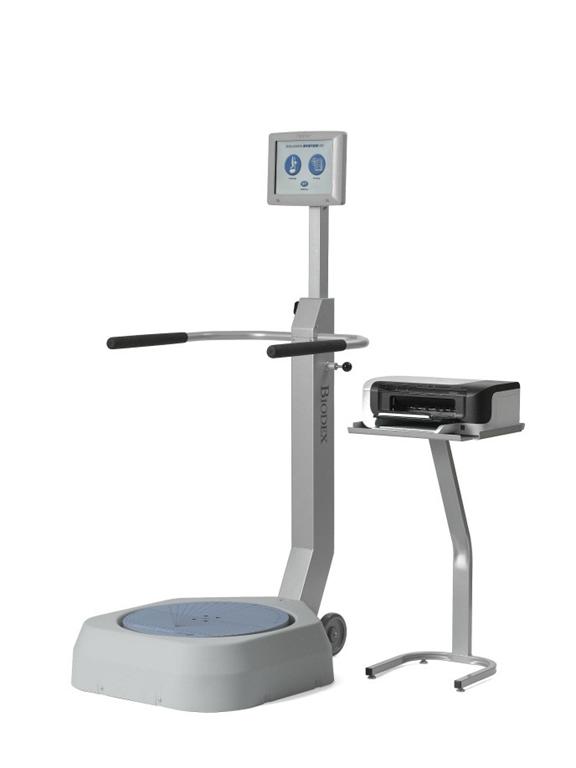
SD balance system:
The SD Balance System, with four test protocols and five treatment protocols, allows testing and testing in both static and dynamic forms, and is the only system that quickly assesses risk. The device also evaluates weight bearing and Exercise for patients with weak lower extremities is beneficial.
Using this unique medical device, the physician can evaluate muscle neuromuscular control by determining the ability to maintain bilateral and one-way stability on a stationary or movable surface. The SD Balance System is also a valuable educational tool for enhancing kinetic abilities that can be used to some extent in the mechanism of response to a deep sensory disorder caused by injury.
The SD device's touch-screen form is that it makes learning easier to operate the system, making it easy for the user to walk in with test protocols and training modes. The result of all tests and training sessions is written in the reports and They are in the file of the patient.
usage :
1. Sports and Orthopedic Medicine:
A: Two-way Balance Activities:
Choose your favorite tutorial mode.
Start from level 12 or static and continue until you are tolerant.
Shake the platform along with each practice protocol.
Use tossing the ball to match the eyes and hands.
B: Unilateral Balance Activities:
Choose your favorite treatment mode.
Start from level 12 or static and continue until you are tolerant.
Schedule each platform in any protocol.
C: Upper limb two-way activities:
Place both hands diagonally in the north and south or east and west directions.
Choose your favorite practice mode.
Start with the static platform and proceed with it.
Scroll through any platform practice.
2- Preventing falling:
Two-way exercises:
Start with a static level.
Use the browsing network to show where it falls to happen.
One-way exercises:
Ask the patient to keep the platform stable and show how to keep the platform steady.
Different patterns are used to increase the strength of the lower limbs.
When these activities are carried out, the necessary precautions should be taken.
Be sure the patient has the ability to do this hard work.
Make sure you have a good bilateral stability before unilateral stability.
Make sure the patient uses the handles as needed.
. Before stabilizing the dynamics, make sure the static stability is one-way and two-way.
The more mobile the platform is, the harder it gets.
Be sure the patient uses handles at all times.
The training modes:
Practice protocols provide a simple way to set up a training session. These protocols create five interactive tutorials that are similar to the game.
Educational modes show the most basic parameters. Educational information can not be saved, but the function of the print page allows the user to print the educational results.
Testing:
The SD Balance System allows physicians to evaluate neuromuscular control of patients in a closed circuit and, by quantifying the patient's ability to maintain unilateral and bilateral stability at both fixed and movable levels.
The level stability level is controlled by the system's microprocessors. The physician chooses the test period, the level of stability, and the protocol. In the dynamic test, the patient's ability to control the platform angle is measured as a packet-level variance. A large variance may represent a weak neuromuscular response. Comparative reports and estimates are available on a chart in patient functions. The static test measures the angular velocity of the patient's center of gravity. Testing is ideal for baseline testing in motion impairment, performance impairment and orthopedic patients. Good static test scores lead to progression to dynamic testing.